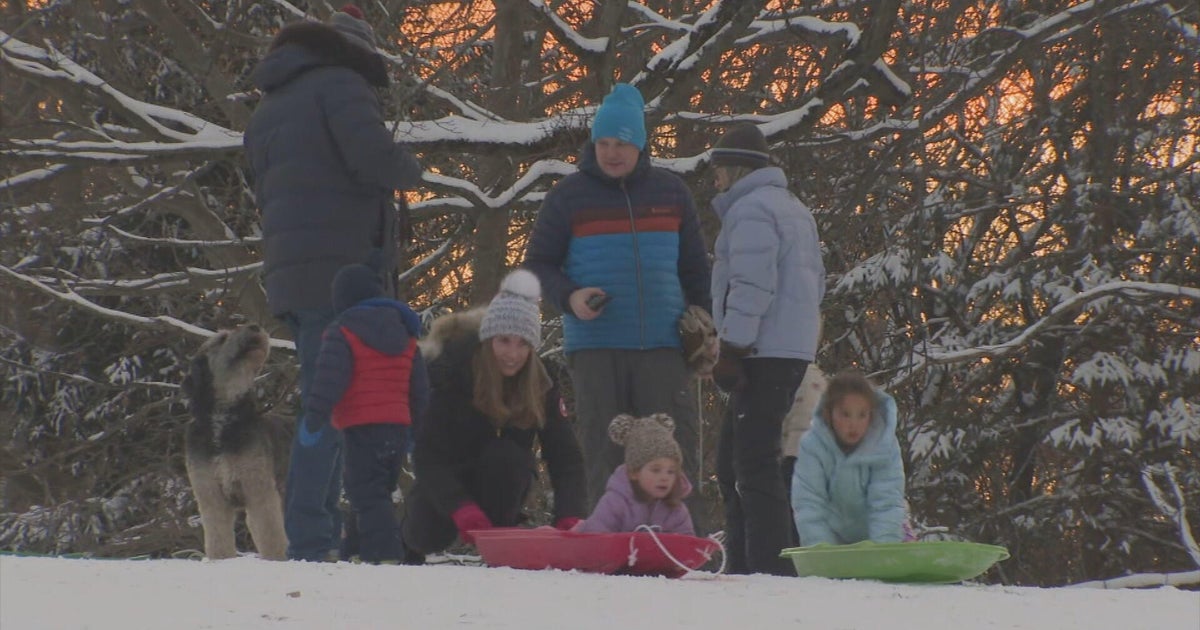I-Team: Dangerous Air Quality In Many Mass. Schools
GARDNER (CBS) - There's something wrong in many Massachusetts schools, but it's nothing you can see or touch.
The I-Team found poor indoor air quality is making it harder for many children to learn.
As you drive up to the Elm Street School in Gardner, it's easy to notice most of the windows are open. It stays that way all thru the winter according to Superintendent Carol Daring.
The elementary school, which was built in 1926 and houses about 500 students, has a chronic problem with fresh air.
Ray Lashua believes the school's air is making his daughter sick. He says this as he studies a report by the Massachusetts Department of Public Health which indicates a carbon dioxide reading of 1921 parts per million in her classroom.
That is more than three times the recommended amount of CO in an environment habituated by children.
His daughter would only cough when she was at school and that meant constant calls from the school nurse. "It sounded like a child who has the croup. A dark, deep barking cough," he said.
"With 10-15 minutes of being outside the school, it would stop and it never happened anywhere else," he added.
The state report indicated astronomical carbon dioxide readings throughout the building.
Dr. Daring said some of the buildings ventilators don't work and admits the air exchange isn't what it should be. When asked if that meant the air quality also wasn't what it should be, she agreed that was the case.
The I-Team obtained a DPH report from 12 years ago when the state inspectors told Gardner officials basically the same thing: the air quality in the Elm Street School was bad.
Dr. Daring, who has been at the helm of the school system since 2005, does not believe anyone dropped the ball. "I've seen evidence that that it was on older capital planning lists as well, but it's an extraordinary expenditure," she explained.
That explanation doesn't satisfy Lashua, who said "They never should have put this on the back burner. I don't want any child to suffer, especially if it can be fixed."
Poor indoor air quality is in schools everywhere, unfortunately. The I-Team reviewed dozens of public health reports from across the state over the past two years.
We found alarming levels of carbon dioxide in schools located in a wide array of communities: Haverhill, Georgetown, Fitchburg, Melrose, Brockton, Hingham, Holbrook, and Duxbury, for example.
Common causes of unhealthy air include leaking roofs, blocked ventilation units, and overgrown shrubs blocking exterior vents.
Suzanne Condon of the DPH says the health consequences are real. "Exposure to higher levels of mold and moisture can certainly exacerbate asthma and there is some question in the public health and medical community about whether or not it might actually cause asthma," she said.
When asked about the 1998 report from Gardner, and whether students are let down if DPH recommendations are ignored, Condon replied "I think it is safe to say that children aren't in an as optimal environment as they should be if our recommendations are ignored."
It has been written in academic studies that poor air quality makes it harder for students to focus and stay alert in the classroom. That affects learning. In fact, students in classrooms with good ventilation score about 15% higher on standardized tests than those with bad air quality.
Education professor Dennis Shirley of Boston College said, "You can't see it. You can't touch it, but the impacts are real."
He added, "The hard thing about these issues is the kids won't be able to articulate it necessarily, but something will be wrong, and it changes the delicate chemistry that a teacher is trying to establish in a classroom."
Officials in Gardner have initiated an extensive cleaning program, and have removed rugs and stuffed animals from classrooms which might be breeding grounds for mold.
Real long term solutions are expensive, and like most communities, Gardner doesn't have that kind of money lying around.
Poor air quality is not linked to the age of a school building. If that building has been well maintained, and the ventilation system has been upgraded as part of any remodeling projects, then the air quality can be just fine.



